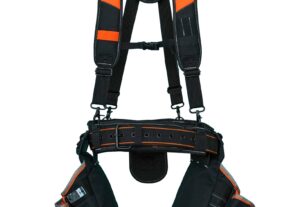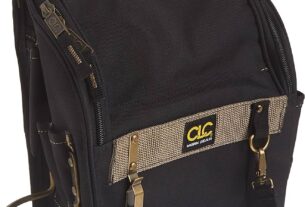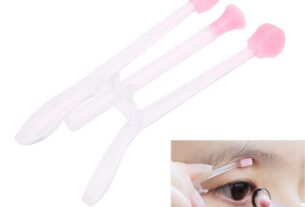If you’re a machinist or DIY enthusiast, you know the importance of having the right tools in your arsenal. One essential tool for any metalworking project is a metal lathe, but it’s not just about having the lathe itself. To take your metalworking to the next level, you need to have the right metal lathe tools and accessories. In this guide, we’ll explore everything you need to know about these critical components of any metalworking setup.
Why Are Metal Lathe Tools and Accessories Important?
Before we dive into specific types of metal lathe tools and accessories, let’s first understand why they are so important. For starters, using the right tools can greatly improve the efficiency and accuracy of your work. Not only that, but having access to a variety of different tools means you can tackle a wider range of projects.
Additionally, some metal lathe tools and accessories may be necessary for certain projects. For example, if you’re working with a particular type of metal that requires specific cutting angles or speeds, having the right tool can make all the difference.
Overall, investing in quality metal lathe tools and accessories is essential for anyone serious about metalworking. It can help you achieve more precise results while also expanding your capabilities as a machinist.
Types of Metal Lathe Tools
Now that we’ve established why metal lathe tools and accessories are important let’s take a closer look at some specific types of tools you might need in your workshop.
1. Cutting Tools
Cutting tools are perhaps the most critical component of any metalworking setup. Without them, you wouldn’t be able to shape or manipulate the material in any meaningful way. There are several different types of cutting tools available for use with a metal lathe:
– Turning Tools: These tools are used to remove material from cylindrical objects. They can come in a variety of shapes and sizes to suit different projects.
– Boring Tools: Boring tools are used to enlarge existing holes or create new ones in metal objects.
– Chamfering Tools: These tools are used to create beveled edges on metal objects, which can improve the appearance and functionality of the object.
– Parting Tools: Parting tools are used to cut off sections of material from larger pieces. They’re particularly useful for creating grooves or other detailed features.
2. Measuring Tools
Accurate measurements are essential in metalworking, which is why having the right measuring tools is so important. Some common types of measuring tools include:
– Calipers: Calipers can be used to measure both internal and external dimensions of objects with great accuracy.
– Micrometers: Micrometers are similar to calipers but offer even greater precision. They can be used to measure extremely small distances.
– Depth Gauges: As the name suggests, depth gauges are used to measure the depth of cuts or holes in metal objects.
3. Holding Tools
Holding tools are designed to keep your workpiece securely in place while you work on it. Without holding tools, your workpiece might shift or move during machining, leading to inaccurate results. Some common types of holding tools include:
– Chucks: Chucks are a type of holding tool that attach directly to the spindle of your lathe. They’re available in several different styles and sizes depending on your needs.
– Collets: Collets are another type of holding tool that can be used to hold round or hexagonal objects securely in place.
– Vises: Vises are typically used for smaller objects that need more precise positioning than chucks or collets can provide.
Types of Metal Lathe Accessories
In addition to cutting, measuring, and holding tools, there are also several different types of accessories that can help you achieve better results in your metalworking projects. Let’s take a closer look at some of these accessories:
1. Coolant Systems
When working with metal, it’s important to keep the material cool to prevent overheating and damage to the lathe or cutting tools. Coolant systems can help regulate the temperature of your workpiece while also reducing friction and improving accuracy.
2. Tool Posts
Tool posts are used to hold cutting tools securely in place on your lathe. They can be adjusted to accommodate different types of tools and can help ensure that your cuts are consistent and accurate.
3. Digital Readouts
Digital readouts can help you keep track of important measurements while you work. They’re particularly useful for ensuring that you’re making consistent cuts across multiple pieces.
4. Lathe Stands
A good lathe stand can help stabilize your machine while also providing storage space for your tools and accessories. This can be especially helpful if you have a smaller workshop or limited workspace.
Choosing the Right Metal Lathe Tools and Accessories
With so many different types of metal lathe tools and accessories available, how do you know which ones are right for your needs? Here are a few things to consider when making your selection:
– Your Budget: Quality metalworking tools and accessories can be expensive, so it’s important to set a budget before you start shopping.
– Your Projects: Consider what types of projects you’ll be working on most frequently. This will help you determine which tools and accessories will be most useful.
– Your Skill Level: If you’re just starting out with metalworking, you might not need all the bells and whistles that more experienced machinists require.
– Compatibility: Make sure any tools or accessories you purchase are compatible with your specific lathe model.
Conclusion
Metal lathe tools and accessories are an essential component of any machinist’s workshop. Having access to quality cutting, measuring, and holding tools can greatly improve the accuracy and efficiency of your work. Additionally, accessories like coolant systems, digital readouts, and lathe stands can help take your metalworking to the next level.
If you’re in the market for new metal lathe tools and accessories, consider your budget, projects, skill level, and compatibility when making your selection. With the right tools at your disposal, you’ll be able to tackle even the most challenging metalworking projects with ease.
References:
– Metal Lathe Tools & Accessories: https://www.grizzly.com/metal-lathe-tools-accessories/
– Types of Cutting Tools: https://www.thomasnet.com/articles/machinery-tools-supplies/types-of-cutting-tools/
– Measuring Tools: https://en.wikipedia.org/wiki/Measuring_instrument
– Holding Tools: https://en.wikipedia.org/wiki/Holding_device
– Coolant Systems: https://www.machiningcloud.com/article/coolant-systems-for-cnc-machines-and-metalworking-applications/
– Tool Posts: https://www.lathes.co.uk/toolpost/
– Digital Readouts: https://www.mitutoyo.com/product-category/digital-readout-systems/
– Lathe Stands: https://www.harborfreight.com/tool-storage/tool-storage-cabinets/29-in-heavy-duty-toolstand-90320.html




